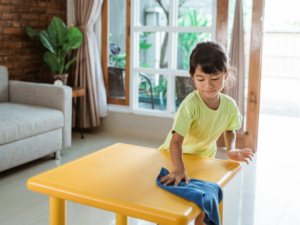Children may be thrilled by the end of the school year, but summer break can be stressful for parents. While all children do better with structure and routine, some require a predictable “safe zone” that the school provides. Without it, they are more prone to anxiety, oppositional behavior, and tantrums. Here are six tips to help keep your child on track so summer can be as rewarding as possible for everyone.
Tips for Summer Break
- Maintain your Schedule. It helps to maintain the school year’s daily schedule as much as possible, such as mealtimes and bedtimes. It can be very tempting to let your kids stay up late and sleep in, but in the long run, sticking to the same schedule pays off by keeping your child more comfortable and, in turn, more cooperative.
- Make a Visual Schedule. Kids benefit from posted schedules that outline what will happen throughout the day. Depending on your child’s developmental level, simple pictures can help too.
- Make Plans. Try to schedule as many activities as possible, as early as possible, and keep your kids posted. Setting plans can give kids a center of gravity around which the rest of the day can be structured.
- Get Outdoors. Try to find something your child enjoys, like riding a bike or scooter, playing tag, or swimming at the community pool, water park, or beach. Physical activity is good for everyone’s mind, body, and spirit, especially those kids with energy to burn.
- Maintain or Create a Behavioral System. You should choose the two or three most desired positive behaviors to nurture with consistent and positive reinforcement and try to ignore as many negative ones as possible. This teaches children the definite rewards of the desired behavior and that acting out gets them nothing, not even negative attention. A sticker chart for accomplished tasks can work wonders as positive reinforcement for preschool children. Also, set limits, such as 30 minutes a day of earned computer time, and stick to them.
- Mimic Home Routines, Even When Traveling. Staying in hotels and eating in restaurants can be overwhelming for some children. Instead, rent lodgings online where you can mimic home routines and bring familiar nonperishables and several cooked meals. Also, make sure there is a store nearby for things like milk, juice, and fruit. Having to cook and shop isn’t exactly a vacation for parents, but it’s more peaceful than trying to eat out.
Related Articles
https://vitalxchange.com/tips-for-the-transition-from-school-to-summer
https://vitalxchange.com/ten-benefits-of-kids-gardening



